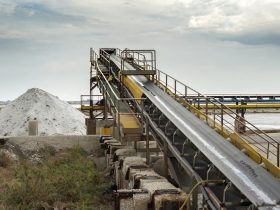Renewable energy is becoming more and more important as we seek to reduce our reliance on fossil fuels and decrease our carbon footprint. While solar and wind power are the most well-known forms of renewable energy, geothermal energy also has an important role to play in the renewable energy landscape.
What is Geothermal Energy?
Geothermal energy is heat from the Earth that can be harnessed and used to generate electricity. This heat is produced by the natural decay of radioactive elements in the Earth’s core and is constantly replenished by the heat from the Earth’s mantle.
To harness geothermal energy, wells are drilled into the Earth to access hot water and steam. This hot water and steam are then used to power turbines and generate electricity.
The Benefits of Geothermal Energy
There are several benefits to using geothermal energy as a source of renewable energy. First and foremost, geothermal energy is a clean and renewable source of energy. Unlike fossil fuels, which release harmful pollutants into the atmosphere when burned, geothermal energy produces no emissions.
In addition to being clean and renewable, geothermal energy is also reliable. Unlike solar and wind power, which are dependent on weather conditions, geothermal energy can be harnessed 24/7, 365 days a year. This makes it a great source of baseload power, which is the minimum amount of power needed to meet a region’s energy needs.
Geothermal energy also has a relatively small land footprint compared to other forms of renewable energy. While wind and solar farms require large amounts of land to generate significant amounts of electricity, geothermal power plants can generate large amounts of electricity from a relatively small amount of land.
The Challenges of Geothermal Energy
While geothermal energy has many benefits, there are also some challenges associated with it. One of the biggest challenges is that geothermal resources are not evenly distributed around the world. In order to harness geothermal energy, wells must be drilled into the Earth, and these wells are expensive to drill.
Another challenge associated with geothermal energy is that it can sometimes be difficult to predict the potential output of a geothermal resource. This means that it can be difficult to attract investors to fund geothermal energy projects.
The Future of Geothermal Energy
Despite the challenges associated with geothermal energy, many experts believe that geothermal energy has a bright future. As technology improves and drilling costs decrease, it may become more financially feasible to access geothermal resources. In addition, as the world continues to seek out clean and renewable sources of energy, geothermal energy is likely to become an increasingly important part of the renewable energy landscape.
Overall, geothermal energy has many benefits as a source of renewable energy. It is clean, reliable, and has a small land footprint. While there are some challenges associated with geothermal energy, these challenges are likely to be overcome as technology improves. As we work to transition to a more sustainable energy future, geothermal energy is sure to play an important role.










